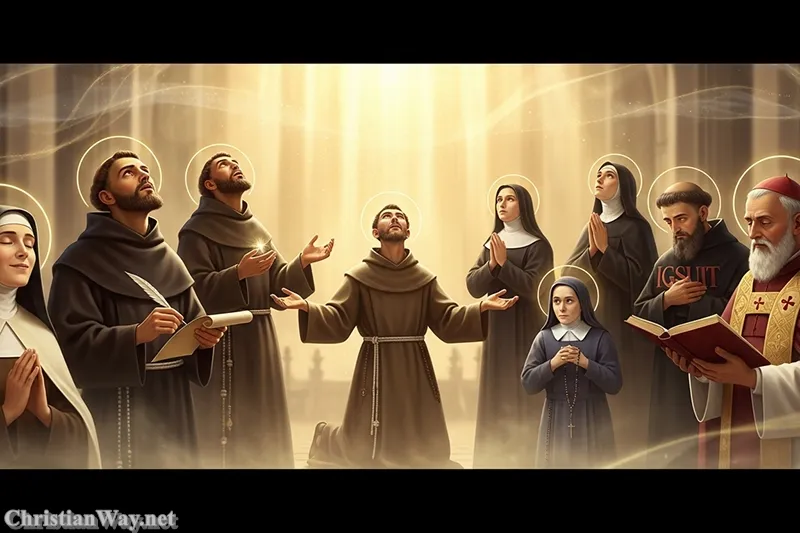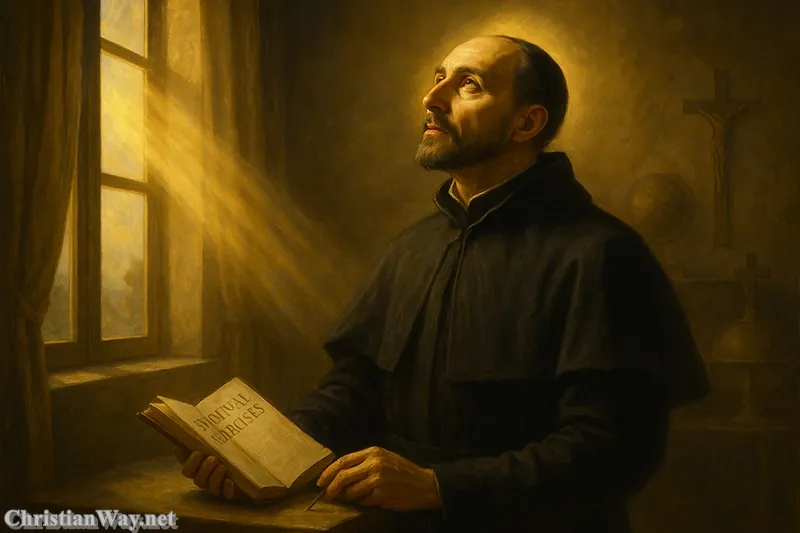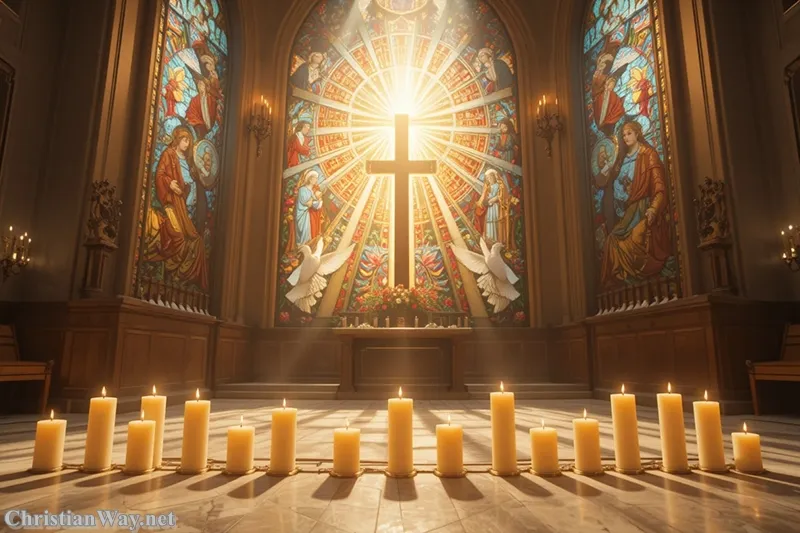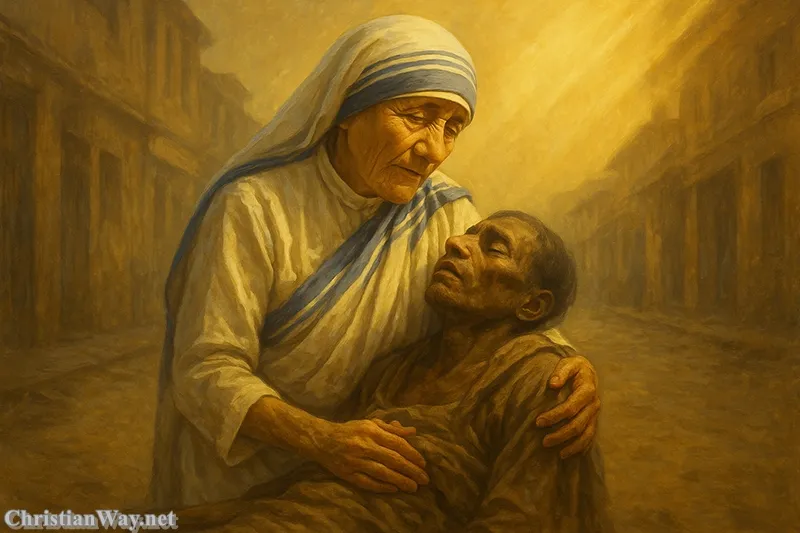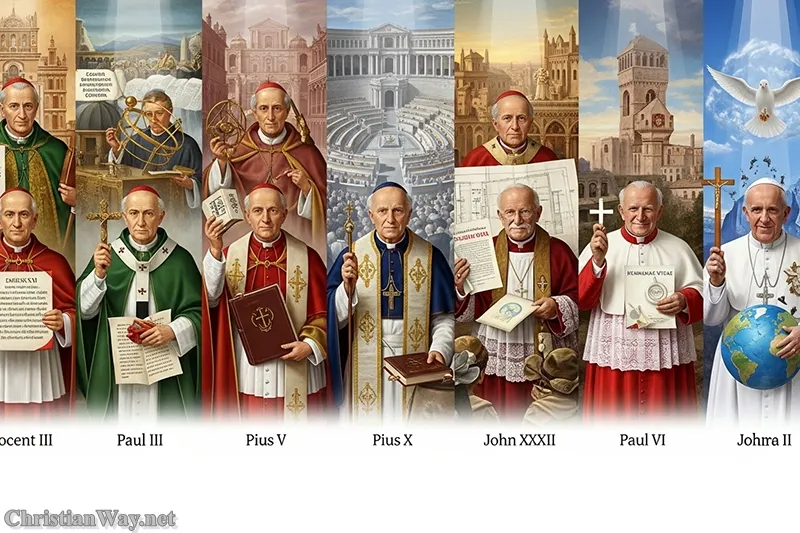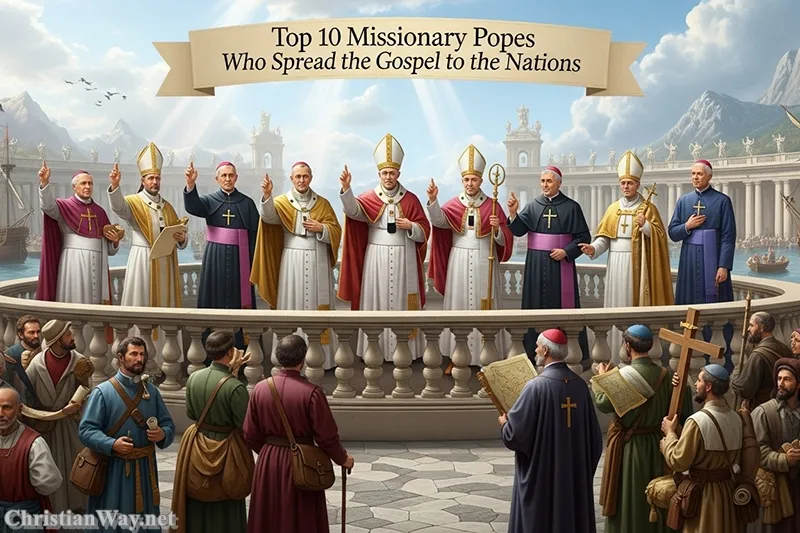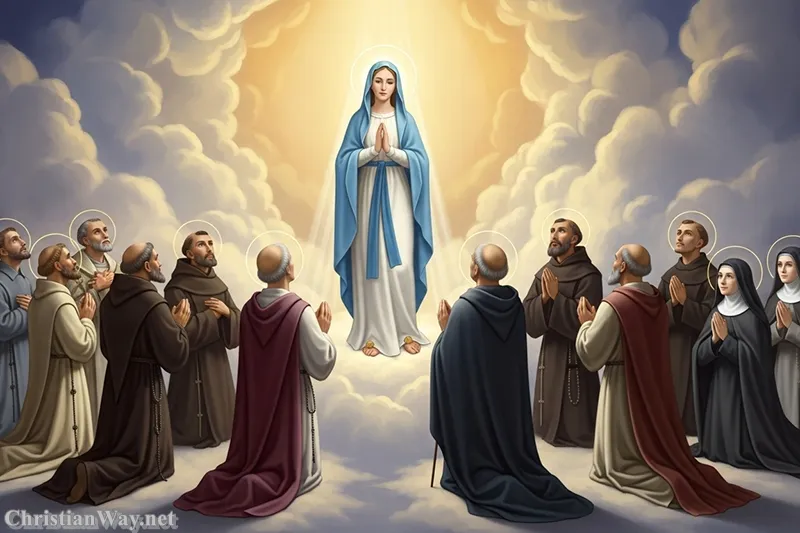Dear friends in Christ,
The story of the Church in the modern era is, in many ways, the story of courage — not only the courage of martyrs and missionaries, but also of shepherds who have stood at the crossroads of faith and history. From the dawn of the Industrial Revolution to the digital age, the world has changed with breathtaking speed. Old certainties have crumbled; new ideologies have risen; nations have fallen and been reborn. And yet, through it all, the See of Peter has endured — not as a monument of the past, but as a living witness to the truth that transcends time.
The popes of the modern world have faced challenges that the apostles could scarcely have imagined: revolutions and wars, atheism and secularism, cultural upheaval and moral confusion. Yet they did not retreat in fear. Instead, guided by the Holy Spirit, they carried the Gospel into the heart of modernity — sometimes with words of reform, sometimes with gestures of mercy, and always with the unshakable conviction that Christ remains the light of the world.

In this reflection, we will journey through the lives and pontificates of ten remarkable successors of Saint Peter — ten modern world popes who faced the trials of modernity with courage, wisdom, and faith. From the builders of peace to the prophets of renewal, each of them shows what it means to be a servant of God in an age of change.
1. Pope Pius IX (1846–1878): The Defender of Faith Amid Revolution
When Pope Pius IX ascended to the throne of Peter, Europe was trembling with revolution. Monarchies fell, national movements rose, and the secular age began to assert itself. Pius IX, once considered a liberal reformer, soon found himself forced to defend the Church against forces that sought to erase its influence from public life.
He became known for defining the dogma of the Immaculate Conception of Mary in 1854 and for convoking the First Vatican Council (1869–1870), which proclaimed the doctrine of papal infallibility. Yet his reign was marked by deep sorrow: the loss of the Papal States and the growing hostility of modern ideologies.
Despite being portrayed as a pope in conflict with modernity, Pius IX’s steadfastness preserved the Church’s spiritual identity at a time when many institutions were collapsing. His witness reminds us that fidelity to truth is not stubbornness, but love — love for the Church, and love for souls seeking certainty in an uncertain age.
2. Pope Leo XIII (1878–1903): The Pope Who Brought Faith to the Modern Worker
After the turbulence of Pius IX’s reign, Pope Leo XIII brought a new spirit of dialogue and renewal. Often called the “first modern pope,” Leo XIII engaged directly with the social and intellectual challenges of the modern world.
His landmark encyclical Rerum Novarum (1891) addressed the injustices of industrial capitalism, the dignity of labor, and the rights of workers — laying the foundation for Catholic social teaching. He understood that modernity was not merely to be resisted but evangelized.
Leo XIII also promoted the study of Thomistic philosophy as a response to modern skepticism and materialism. His papacy marked a turning point — the beginning of a Church that would walk confidently into the new century, proclaiming that faith and reason are not enemies, but companions on the road to truth.
3. Pope Pius X (1903–1914): The Saint Who Guarded the Purity of Faith
Pope Saint Pius X, known for his motto “To restore all things in Christ,” confronted the early 20th century’s theological crisis known as Modernism — a movement that sought to reinterpret faith through the lens of relativism and historical criticism.
He acted decisively to preserve doctrinal integrity, issuing encyclicals that reaffirmed the timeless truths of the faith. Yet Pius X was not only a guardian of doctrine; he was a man of deep pastoral love. He encouraged frequent Holy Communion, promoted liturgical reform, and lowered the age for First Communion, bringing countless children closer to the Eucharist.
His sanctity lay not only in his firmness but in his tenderness. Pius X faced the dawn of modernity by reminding the Church that the heart of renewal is not accommodation, but holiness.
4. Pope Pius XI (1922–1939): The Shepherd in the Storms of Ideology
As the world descended into the shadow of totalitarianism, Pope Pius XI became a voice of conscience against the rising tide of fascism, communism, and racial hatred. His encyclicals — Mit Brennender Sorge (1937), written against Nazi ideology, and Divini Redemptoris, condemning atheistic communism — stand as prophetic documents of courage.
He also concluded the Lateran Treaty with Italy in 1929, restoring the Vatican’s independence and shaping the Church’s modern diplomatic role. In a century torn by ideological warfare, Pius XI’s leadership showed how the Church could confront the darkness of modernity without surrendering to it.
He faced the modern world not by retreat, but by witness — proclaiming that no earthly system could claim the soul of humanity, for it belongs only to Christ.
5. Pope Pius XII (1939–1958): The Silent Shepherd in the Age of War
Few popes have been as misunderstood as Pope Pius XII. Leading the Church during World War II, he faced moral and political challenges beyond imagination. While some accused him of silence, history increasingly reveals a man who worked tirelessly behind the scenes to save Jewish lives and to preserve the Church’s unity in a time of global chaos.
Pius XII’s encyclicals on peace, science, and the dignity of the human person helped guide Catholics in the postwar world. He recognized early the moral dilemmas posed by nuclear weapons, totalitarianism, and the rapid advance of technology.
His profound spirituality and pastoral care prepared the way for the aggiornamento — the “opening to the world” — that would come with the Vatican II popes. His was a papacy of hidden heroism, serving God in the shadows of history.
6. Pope Saint John XXIII (1958–1963): The Good Pope Who Opened the Windows
When Pope John XXIII announced the Second Vatican Council in 1959, many were astonished. The Church, it seemed, had been living in defensive posture for centuries. But John XXIII, with his warm smile and boundless trust in the Holy Spirit, saw that it was time not for fear, but for renewal.
The Vatican II popes, beginning with John XXIII, sought to bring the Church into deeper dialogue with the modern world — not by changing her truth, but by rediscovering how that truth could shine anew.
His vision was pastoral, not political. In his encyclical Pacem in Terris (1963), he called for peace founded on justice, human rights, and the unity of nations. John XXIII faced the challenges of modernity with a father’s heart, teaching that the Church’s mission is not to condemn the world, but to heal it.
7. Pope Saint Paul VI (1963–1978): The Bridge Between Tradition and Modernity
When Pope Paul VI inherited the Council from John XXIII, he bore the heavy task of bringing its vision to life. The post-conciliar era was one of confusion, tension, and change — yet Paul VI remained steadfast in faith, guiding the Church through storms of ideology and doubt.
He concluded Vatican II in 1965, promulgating its major documents on the Church, liturgy, and the modern world — notably Gaudium et Spes, which proclaimed:
“The joys and hopes, the griefs and anxieties of the men of this age… are the joys and hopes, the griefs and anxieties of the followers of Christ.”
Paul VI’s encyclical Humanae Vitae (1968) reaffirmed the Church’s teaching on the sacredness of life and marriage, sparking debate but standing as a prophetic voice against the reduction of human love to mere technology.
In Paul VI, we see the pope of modernity who bore the cross of transition — a man who loved the world enough to tell it the truth.
8. Pope Saint John Paul II (1978–2005): The Apostle of the New Evangelization
Pope Saint John Paul II, the first non-Italian pope in over four centuries, brought the papacy to the world’s stage with unparalleled energy. Having suffered under both Nazism and communism, he knew the human cost of ideologies that denied God.
John Paul II confronted the modern world not with fear, but with the radiant joy of Christ. His travels — 104 apostolic journeys — carried the Gospel to every corner of the earth. He spoke boldly of the dignity of the human person, the sanctity of life, and the call to holiness in everyday life.
His encyclicals, from Redemptor Hominis to Evangelium Vitae, articulated a theology of the human person rooted in divine love. He was a philosopher-pope, but also a father who wept with the suffering.
Above all, John Paul II gave the Church the New Evangelization — a call to proclaim Christ anew in the age of modernity, with hope and creativity.
9. Pope Benedict XVI (2005–2013): The Theologian of Truth in the Age of Relativism
Pope Benedict XVI, one of the most brilliant theologians of the last century, faced the intellectual heart of modernity: relativism — the idea that there is no absolute truth. In his words, the greatest danger of our time was the “dictatorship of relativism” that leaves humanity adrift without moral compass.
Through his encyclicals Deus Caritas Est, Spe Salvi, and Caritas in Veritate, Benedict reminded the world that faith and reason belong together, and that truth is not an imposition, but an invitation to freedom.
He deepened the fruits of Vatican II, interpreting it not as rupture, but renewal — a continuity of the same faith, expressed for a new age. His humility in resigning the papacy in 2013 also showed the modern world a different kind of courage: the courage of surrender to God’s will.
10. Pope Francis (2013–present): The Pastor Who Brings Mercy to the Streets
In our own time, Pope Francis has become the face of a Church that seeks to go out to the margins — to the poor, the wounded, the forgotten. His papacy continues the journey of engaging the modern world with compassion and simplicity.
Francis has spoken often of a “Church of mercy”, a field hospital for the wounded soul. He challenges the faithful to reject indifference and to live a missionary discipleship that meets people where they are.
His encyclicals Laudato Si’ and Fratelli Tutti speak to the conscience of humanity about the care of creation and the fraternity of peoples. In him, we see the spirit of Vatican II lived out in flesh and blood: the Church walking humbly with the world, yet never losing sight of heaven.
The Thread That Binds Them
What unites these ten modern world popes is not a single policy or ideology, but a living faith — a trust that the Holy Spirit guides the Church even in the storms of history. Each faced unique trials: revolutions, wars, moral confusion, technological change. Yet all of them, in their own way, kept the eyes of the Church fixed upon Christ.
They remind us that to engage modernity is not to surrender to it. It is to love the world as God loves it — enough to speak truth, enough to offer mercy, enough to invite conversion.
The Vatican II popes — John XXIII, Paul VI, John Paul II, Benedict XVI, and Francis — have especially shown how dialogue with the world must always begin in prayer. They teach us that the Church does not fear the modern age, for she carries within her the eternal Word that makes all things new.
Reflect and Pray
As we contemplate these ten shepherds who have led us through the challenges of modernity, let us remember that their struggles are also ours. We live in an age of unprecedented change, but also of profound opportunity.
Faith today must be as courageous as theirs — rooted in truth, yet radiant with love. The Church’s mission is not to hide from the world, but to bring Christ into it. For every age, including ours, is the time of grace.
Let us pray:
Lord Jesus Christ,
You are the same yesterday, today, and forever.
Through the witness of the popes who served You in times of turmoil and change,
strengthen Your Church to stand firm in faith and radiant in charity.
Teach us to face the modern world not with fear, but with hope —
trusting that Your Spirit renews all things.
May we, like them, be faithful to You in every age.
Amen.
— Fr. John Matthew, for Christian Way
Would you like me to now generate a 3:2 image prompt for this article — for example, a symbolic cover image representing the line of modern popes facing the light of Christ across the modern world?
